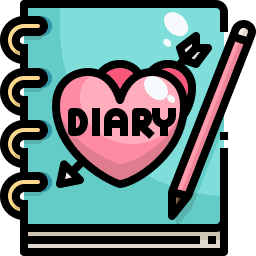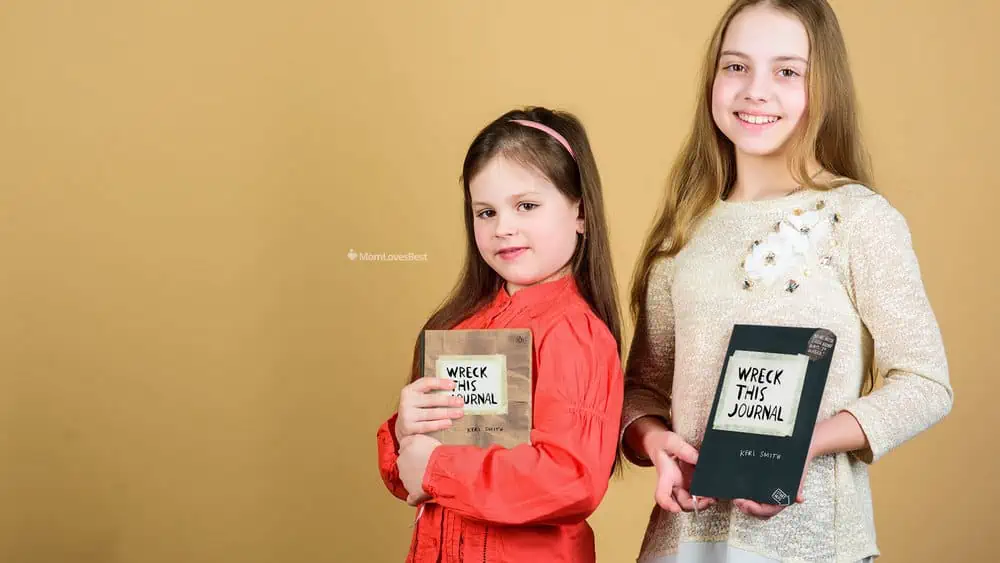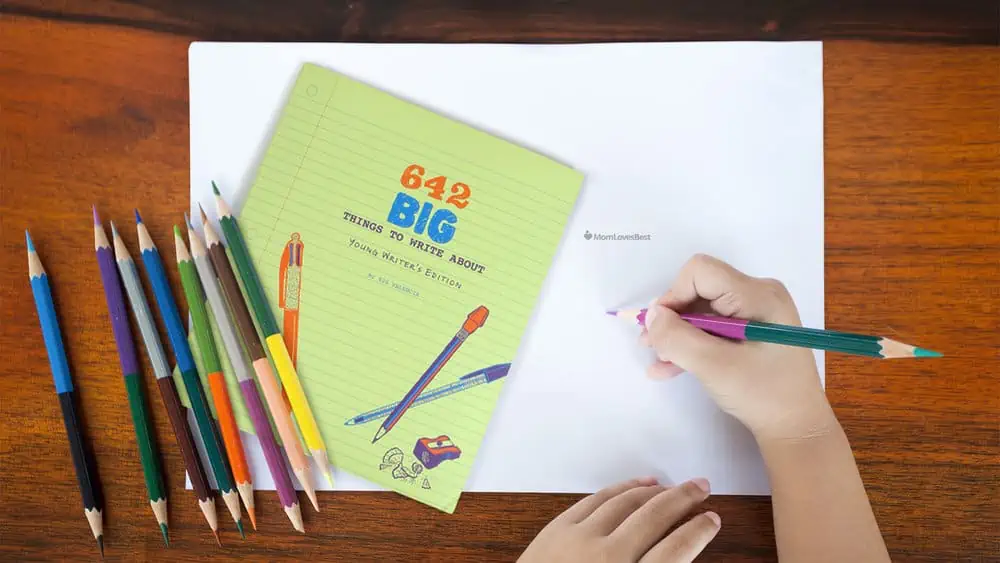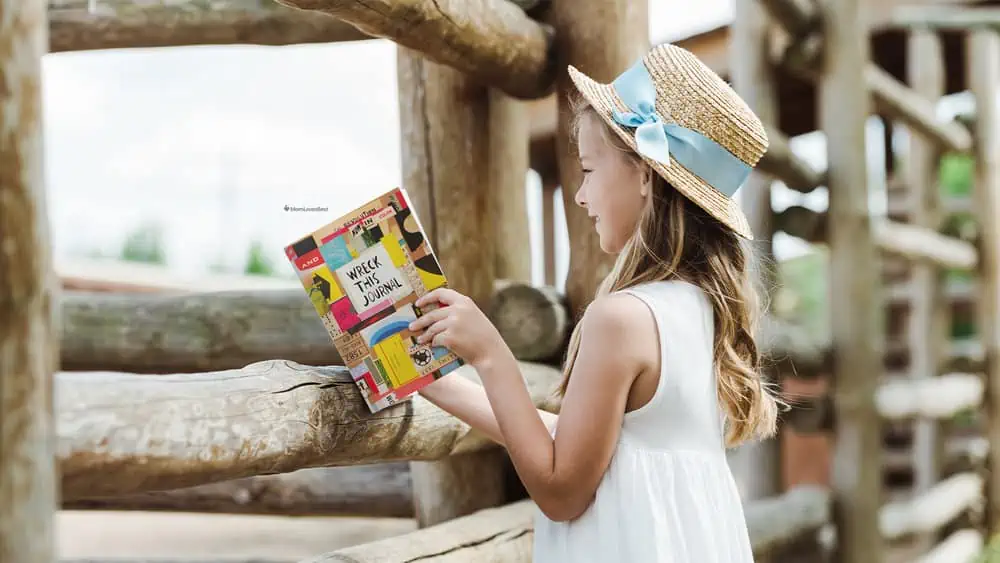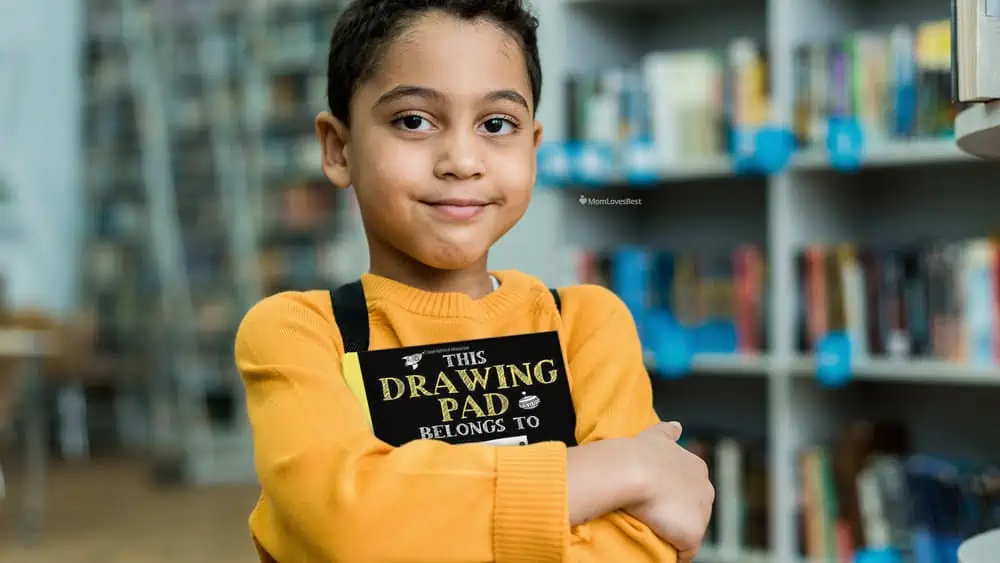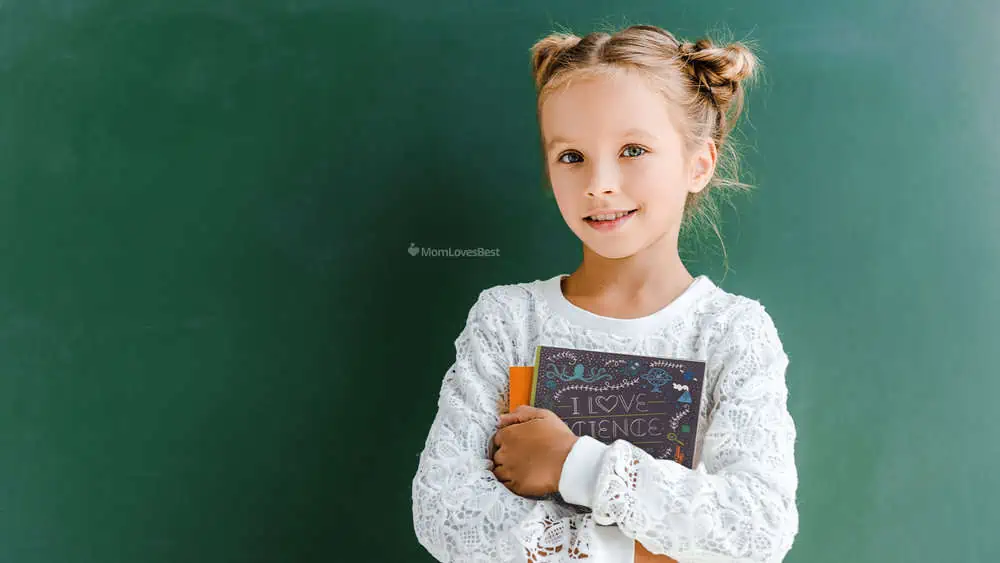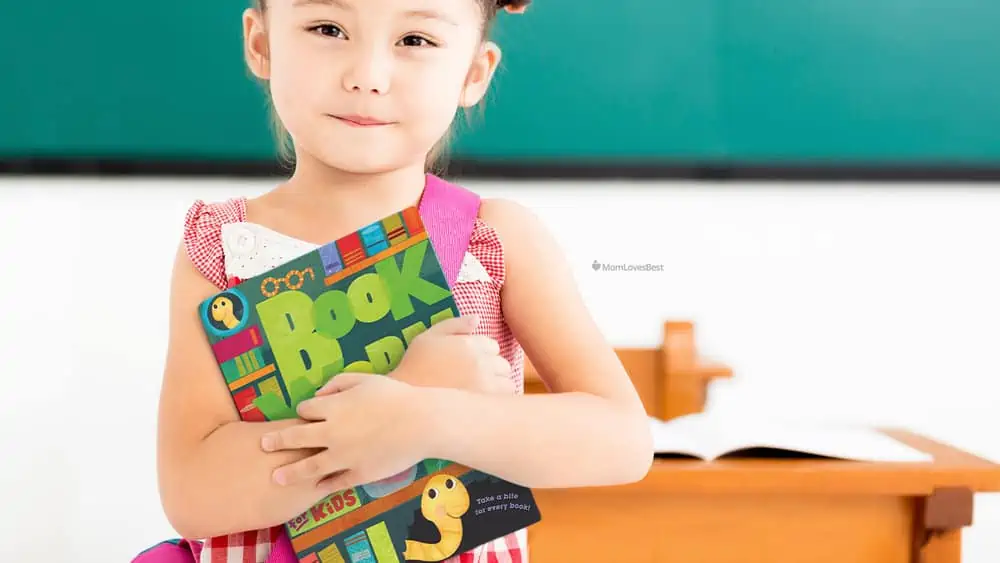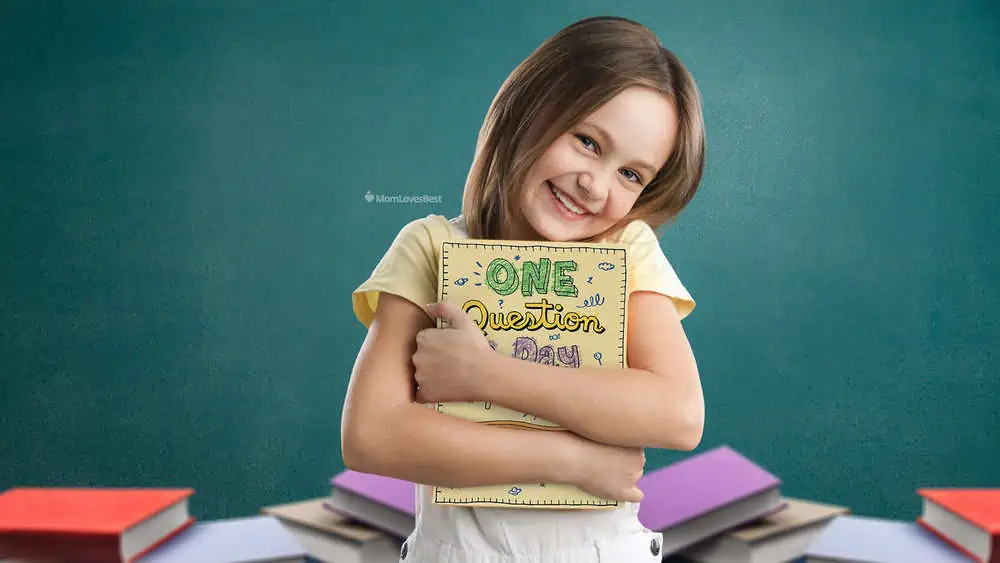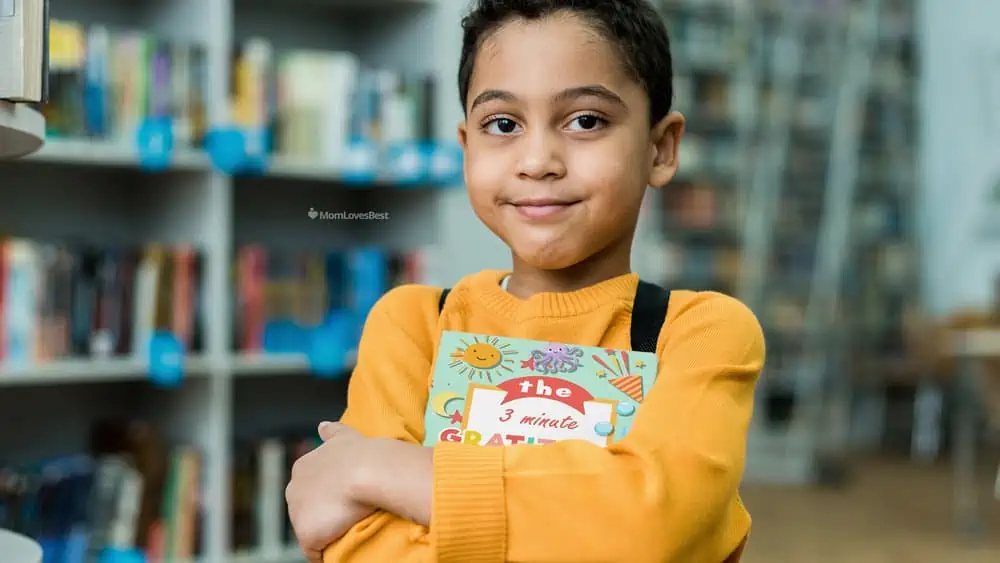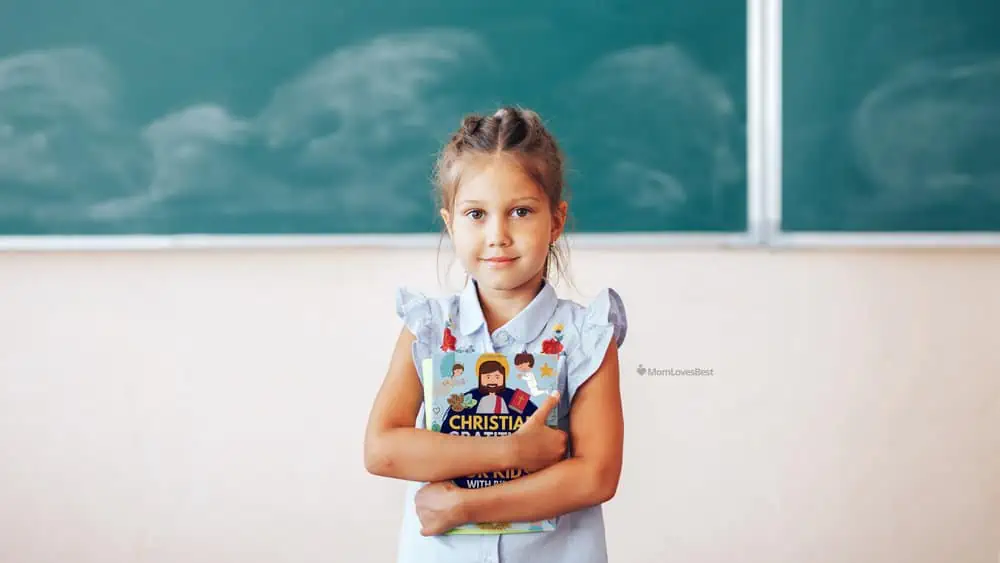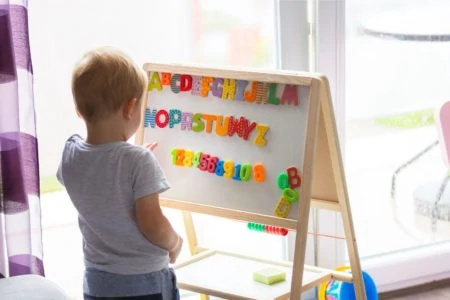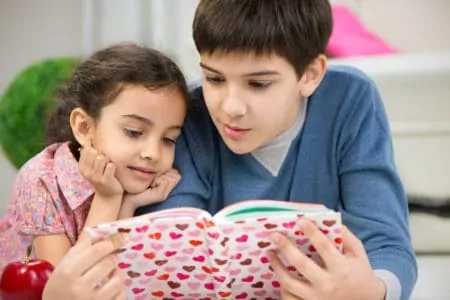Journaling gives kids a safe place to process big emotions, spark creativity, and document their daily adventures.
It doesn’t have to be complicated. A few scribbles in a notebook or a daily sentence about their mood can make a huge difference in their development.
While any notebook can work, the best journals for kids are designed with engaging prompts, fun layouts, and durable covers to guide them on their writing journey.
- Interactive journal
- Encourages creativity & self-expression
- Has over 100 pages
- Designated space for doodles
- Full-colored journal
- Great for conceptual artists
- Full of science facts & graphics
- Encourages self-discovery
- Guided journal experience
- Has various activities and prompts
- Includes inspirational prompts
- Promote self-awareness & reflection
- Includes stickers & postcards
- Teaches social emotional learning
Benefits of Journaling for Kids
Writing things down does more than just improve handwriting; here is how it helps your child develop:
- Boosts writing confidence: A journal is a judgment-free zone. When kids control the narrative without worrying about grades or red pens, they naturally become more comfortable and fluid writers.
- Emotional regulation: We all feel lighter after venting. A journal gives children a private outlet to express anger, sadness, or confusion they might not be ready to speak aloud.
- Strengthens bonds: Journaling together creates a unique connection. It opens the door to conversations you might miss in the rush of daily life.
- Sparks creativity: Guided journals often push kids to think outside the box. Prompts can lead their imagination down paths they wouldn’t explore on their own.
- Builds executive function: For kids who struggle with organization, a journal acts as a low-stakes planner. It helps them track tasks, set goals, and practice consistency.
How to Start Journaling With Your Child
You want this to be a fun habit, not a chore. Here is how to set them up for success:
- Provide the right tools: Stock up on colorful pens, stickers, and a dedicated workspace. Make the physical act of writing feel special.
- Be a cheerleader: Offer encouragement when they get stuck, but don’t hover. Let them know you are proud of their effort.
- Step back: Resist the urge to edit their grammar or dictate topics. This is their world; let them build it.
- Respect their privacy: This is crucial. If a child fears you will read their secrets, they will clam up. Assure them their journal is a safe, private vault for their thoughts.
What to Look For
Finding the right fit depends on your child’s personality and habits. Keep these factors in mind before you buy:
Types of Journals for Kids
From emotional outlets to travel logs, there is a style for every kid. Here is a breakdown of the common types:
Free Writing
These are the classics. Whether it is a simple composition book or a fancy leather-bound diary, these focus on the written word. They are best for kids who already enjoy storytelling or recording their daily lives.
Sketch & Doodle
Blank pages rule here. These are ideal for visual thinkers who process the world through images rather than sentences. Some hybrid options offer split pages, with space for a drawing on top and a few lines of text on the bottom.
Log & Tracker
These journals focus on data and consistency. They usually feature dated pages or habit trackers. They are excellent for building discipline or for kids who like seeing their progress visually represented over time.
Interactive & Guided
These are incredibly popular right now. Instead of staring at a blank page, the journal provides prompts, challenges, and activities. It might ask them to “draw their dinner” or “interview a grandparent.” This structure is perfect for curing writer’s block.
Memory Keepsakes
These are designed to freeze time. Travel journals, for example, often have pockets for ticket stubs and prompts specific to vacations. They turn a trip into a tangible book of memories they can look back on years later.
Locked Diaries
Privacy is a massive deal for tweens. A journal with a lock (key or combination) signals that their thoughts are protected. It provides the psychological safety net some kids need to be truly honest in their writing.
FAQs
Here are some common questions parents have about starting a journaling habit.
Product Reviews
We tested durability, engagement, and prompt quality to find the best options on the market. Here are our top picks:
Wreck This Journal (4 Volume Set)
Best Interactive Journal
If your child is paralyzed by the idea of keeping a “perfect” book, this set is the antidote. It encourages kids to destroy, dirty, and manipulate the pages, turning journaling into a physical activity.
We found the prompts, like “take this book in the shower” or “poke holes in this page”, hilariously engaging. It completely removes the pressure to be neat.
It takes a moment for parents to get used to the intentional destruction, but the creative freedom it unlocks is worth the mess. It is easily the most engaging option for active kids.
My Nature Journal Kids’ Nature Log
Best Nature Journal
This log creates a fantastic reason to get outside and explore. With over 100 pages, it offers a structured way to track weather, temperature, and backyard discoveries.
We love the balance between data entry and creative space. There is plenty of room to tape in a pressed leaf or sketch a bug.
Because the spaces are large and unrestrictive, it works well for younger elementary kids who have larger handwriting. It turns a simple walk around the block into a scientific expedition.
642 Big Things to Write About
Best Writing Journal
This book is a goldmine for defeating writer’s block. Instead of the dreaded blank page, kids get quirky, imaginative prompts like “How would you introduce a new color to the world?”
The layout places three prompts per page, which makes the task feel manageable rather than endless. It is perfect for short bursts of creativity.
We recommend this for kids 8 and up who have the vocabulary to tackle abstract concepts. It is less of a diary and more of a creative writing gym.
Wreck This Journal: Now in Color
Best Journal for Tweens
This is the vibrant evolution of the original classic. If your tween thinks the black-and-white version is too stark, this 224-page technicolor edition adds a new layer of inspiration.
Our tester dove right in without needing any instructions. The activities are just as subversive and fun as the original, but the splashes of color spark different creative ideas.
Be warned: you might want to buy two. It is one of those rare items that appeals just as much to adults as it does to tweens.
This Drawing Pad Belongs to ______!
Best for Doodling
Paper quality is the star here. Unlike cheap sketchbooks where markers bleed through to the next page, this journal uses thicker stock that stands up to enthusiastic coloring.
The prompts strike a nice balance; they are simple enough for a preschooler to interpret but open-ended enough for an older sibling to enjoy.
It is an affordable, high-quality option for kids who communicate better with pictures than words. It’s durable enough to survive being tossed in a toy bin, too.
I Love Science Journal
Best Science Journal
This is a STEM lover’s dream. It kicks off with handy references like the periodic table, then transitions into prompts that encourage observation and hypothesis.
We loved the mix of self-discovery writing (“What makes you curious?”) and actual scientific engagement. The graphics are modern and cool, avoiding the “textbook” feel.
It is an excellent gift for kids who ask “why” a hundred times a day. It channels that curiosity into structured thinking.
Grateful Together Journal for Kids and Parents
Best Parent-Child Journal
Shared journaling is a low-stress way to build intimacy with your child. This book provides a dedicated space for both of you to answer the same question on facing pages.
Whether you fill it out simultaneously or trade the book back and forth, it opens up conversations about gratitude and daily life.
It is particularly helpful for kids who might be shy about talking face-to-face. Writing answers down can often feel safer and lead to deeper sharing.
I Am a Leader 90-Day Journal
Best Leadership Journal For Kids
If you want to build grit and a growth mindset, this journal is a structured way to do it. It focuses on self-confidence, goal setting, and determination.
The prompts help kids look inward to understand their values, then look outward to see how they impact the world. It frames leadership not as “being the boss,” but as taking responsibility.
It is a 90-day commitment, which is great for building a habit. Ideal for kids who thrive on structure and clear objectives.
Go! Kids' Interactive Travel Diary and Journal
Best Travel Journal
This journal is half activity book, half keepsake. Available in different colors (perfect for distinguishing between siblings), it keeps kids busy during long transits.
It goes beyond just “what did we do today.” There are adventure badges to earn, postcards to tear out and send, and stickers to decorate pages.
It keeps the kids engaged without screens during downtime. Plus, you end up with a fantastic souvenir of the trip that they created themselves.
A6 PU Leather Journal
Best Locked Journal for Kids
Traditional diary keys are tiny and inevitably get lost, resulting in a locked book that has to be pried open. This journal solves that problem with a built-in combination lock.
The PU leather cover looks grown-up and stylish, which appeals to tweens who are done with cartoon characters. It feels like a “serious” place for serious thoughts.
The paper is decent quality, and the lock is easy enough for a child to set and use. It provides that essential layer of privacy older kids crave.
Bookworm Journal: A Reading Log for Kids
Best Bookworm/Reading Journal
This is a charming way to track a reading journey. It goes beyond a simple list, offering book suggestions and specific prompts to help kids analyze what they just read.
The “tear-off” corner feature is a clever touch; as they progress, it looks like a worm is eating through the book. It adds a satisfying physical element to finishing a log entry.
The illustrations are definitely geared toward the under-10 crowd. It makes reading feel like an interactive game rather than homework.
Summer Write and Draw Journal for Kids
Best for Younger Kids
Simplicity is the strength of this journal. There are no complex instructions, just 100+ pages featuring writing lines on the bottom and a large drawing box on top.
It is the standard format for early elementary school, making it a great tool to keep skills sharp during summer break.
You can act as the guide by providing a daily topic, or just let them chronicle their summer vacation. It is a blank canvas for budding storytellers.
One Question a Day Three-Year Journal
Best Multi-Year Journal For Kids
This is a time capsule in book form. Each page asks a question, and there are slots to answer it on the same date for three consecutive years.
It is fantastic for kids who are intimidated by big blank pages. They only need to write a sentence or two.
The real magic happens in year two and three, when they get to read their old answers. Seeing how their opinions and handwriting change over time is incredibly rewarding.
The 3-Minute Gratitude Journal for Kids
Best Gratitude Journal
Training the brain to look for the positive is a skill, and this journal helps build it. It is designed to be quick, so it doesn’t feel like another homework assignment.
The prompts are consistent: who brought you joy, what are you thankful for, and what was the best part of the day?
For kids who tend to dwell on the negative or get anxious, this daily ritual can shift their mindset. It’s a small investment of time for a big emotional payoff.
Christian Gratitude Journal for Kids
Best Prayer Journal
This journal combines gratitude practice with spiritual growth. Each page features a daily Bible verse to anchor the child’s thoughts.
There are specific sections to record blessings and things to thank God for. With 100 pages, it provides a substantial amount of space for reflection.
It is made in the USA and serves as a gentle daily reminder of faith. It works well as part of a bedtime routine or morning devotional.
The Journaling Opportunity
Handing your child a journal is like giving them a key to their own mind. It helps them navigate growing pains, capture fleeting memories, and develop a voice that is uniquely theirs.
Whether you choose a messy interactive book or a structured gratitude log, the goal is the same: to get them expressing themselves. Pick one that matches their style, grab some fun pens, and watch their creativity take off.




